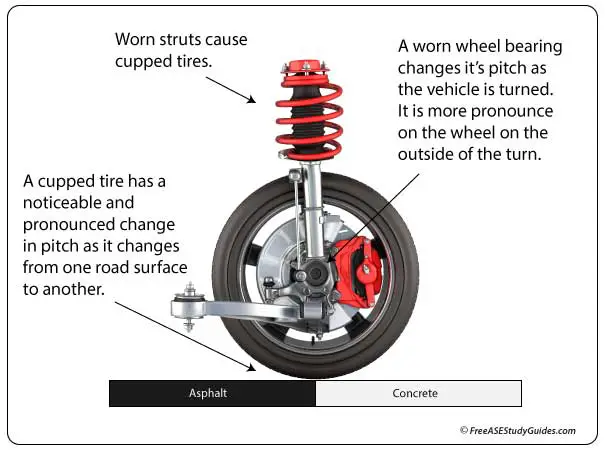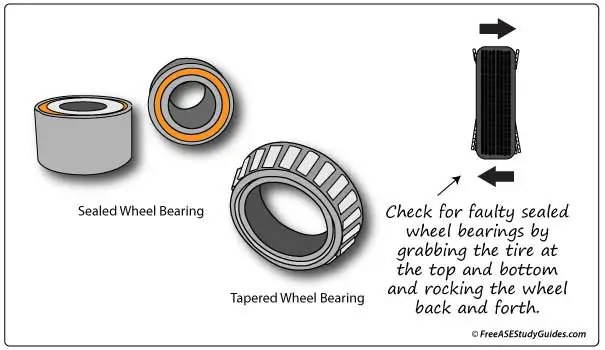Wheel Bearing Noise

Sealed wheel bearings allow the wheel to spin smoothly and keep the tire running true. They are not serviceable. They are integrated into or pressed out of and back into the hub with a hydraulic press. If you suspect a sealed wheel bearing is worn or defective, grasp the tire at the top and bottom and rock it back and forth. If there's end play, the bearing needs replacement.

Diagnosing wheel bearing noise can be difficult. This is because their sound is similar to cupped or aggressive tire tread patterns. Each results in a growling noise that increases with vehicle speed.

A loose or bad wheel bearing makes its most noise while turning. It makes a cyclic chirping sound or growl more noticeable on the side with the bad bearing. A left-hand turn would reveal a bad right-side bearing because the vehicle's weight is focused on that wheel.
Both sealed and tapered wheel bearings are found on today's vehicles. Bearings are designed to provide long life but fail due to lack of lubrication, dirt contamination, and improper adjustment. The first symptom of bearing failure is a squealing, grinding, or growling noise from the wheel associated with the faulty bearing.